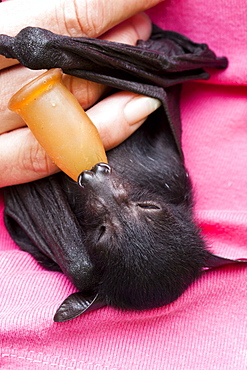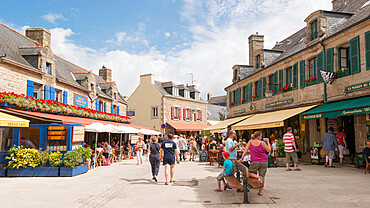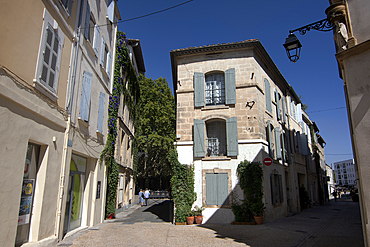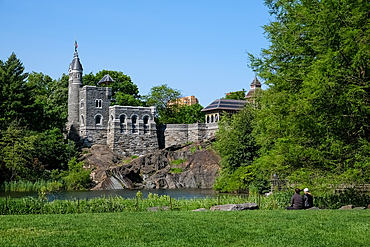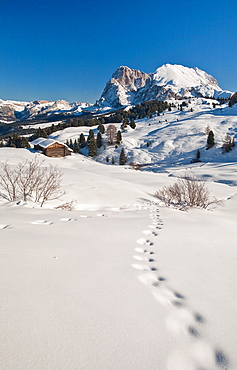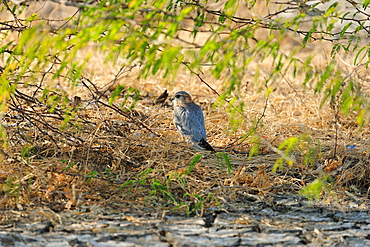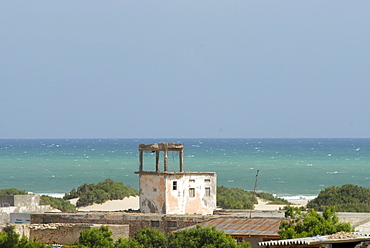Recent searches
Loading...
1382-41 - statue,dedicated to sister writers Sofija & Marija Ivanauskaite-Lastauskiene, by Daliute Ona Matulaite,Vilnius,Lithuania,Europe
1383-41 - Paramount Chief Chitimukulu arriving to start the Ukusefya Pa Ng'wena Ceremony riding on his crocodile chair.
1384-41 - Statue sculpture of Capitan de Fragata Pedro Sainz de Baranda y Barreiro died 1845, Campeche city, Campeche State, Mexico
764-93 - Raccoons (Racoons) (Procyon lotor), 41 day old young in captivity, Sandstone, Minnesota, United States of America, North America
738-41 - Red letterbox and telephone box in the snow, Highlands, Scotland, UK, Europe
17-41 - Hindu temple of Somnath, one of the twelve most sacred Siva temples, Somnath, Gujarat State, India, Asia
41-710 - An old shack on the beach selling food and drinks, Castara, Tobago, West Indies, Caribbean, Central America
41-714 - Portrait of schoolchildren waiting for bus outside a shop, near Roxborough, Tobago, West Indies, Caribbean, Central America
41-854 - Eating out at a cafe in the Boqueria market, La Rambla, Barcelona, Catalona, Spain, Europe
238-41 - Krabi Beach, Ko Pi Pi Island, Thailand, Southeast Asia, Asia
41-692 - Batiks on line on the beach, Turtle Beach, Tobago, West Indies, Caribbean, Central America
744-41 - Stopper in the form of the king's head from one of the four canopic urns, from the tomb of the pharaoh Tutankhamun, discovered in the Valley of the Kings, Thebes, Egypt, North Africa, Africa
748-41 - Daisy, (Asteraceae), West Coast N.P., Langebaan, South Africa
825-41 - Ancient drawings (petroglyphs) on sandstone rock, dating back 6000 years to the early stone age, of camels and also animals no longer found in the area, Twyfelfontein, UNESCO World Heritage Site, Namibia, Africa
763-41 - Family of cocoteros, workers on a coconut plantation in the rural town of Barigua east of Baracoa in eastern Cuba, Cuba
11-41 - Sassanid carvings showing Khasrow II, dating from the 4th century AD, Tagh-e-Bostan, Iran, Middle East
41-739 - Street market, Sanlucar de Barrameda, Andalucia, Spain, Europe
1171-41 - GuanYin Buddha with many smaller Buddhas at Yong Fu Temple, Hangzhou, Zhejiang, China, Asia
769-41 - New Royal Bath, Thermae Bath Spa, Bath, Avon, England, United Kingdom, Europe
799-41 - Algae covered rocks at Tregardock Beach, North Cornwall, England, United Kingdom, Europe
801-41 - The ruins of Machu Picchu, with Huayna Picchu in the background, UNESCO World Heritage Site, The Sacred Valley, Peru, South America
802-41 - A hiker enjoys solitude in the hills above Hay-on-Wye, on the eastern edge of the Brecon Beacons National Park, Monmouthshire, Wales, United Kingdom, Europe
812-41 - Nelsons Column, Trafalgar Square, London, England, United Kingdom, Europe
813-41 - Tampere Cathedral, Tampere City, Pirkanmaa, Finland, Scandinavia, Europe
819-41 - Mask at Venice Carnival, Venice, Veneto, Italy, Europe
826-41 - The famous bas relief panel popularly known as Arjuna's Penance at Mahabalipuram (Mamallapuram), UNESCO World Heritage Site, Tamil Nadu, India, Asia
1161-41 - Olive Baboon glaring at Vervet Monkey (Green Monkey), Grumeti, Tanzania
821-41 - Water fountain and Eiffel Tower at night, Place de la Concorde, Paris, France, Europe
790-41 - Winter Sunset at Durdle Door, Jurassic Coast, UNESCO World Heritage Site, Dorset, England, United Kingdom, Europe
1191-41 - Big wheel and funfair on Central Pier lit at dusk, Blackpool Illuminations, Blackpool, Lancashire, England, United Kingdom, Europe
1211-41 - Primary school, Pong Teuk, Cambodia, Indochina, Southeast Asia, Asia
817-410339 - Olive baboon, Papio Anubis, Olive baboons are widespread throughout equatorial Africa and are found in 25 countries. From the west coast of Africa moving eastward. In the picture there is a mother with a juvenile, the mother is eating some grass and the s. Olive baboon, Papio Anubis, Olive baboons are widespread throughout equatorial Africa and are found in 25 countries. From the west coast of Africa moving eastward. In the picture there is a mother with a juvenile, the mother is eating some grass and the small one is in its back. In Uganda, olive baboons live in open woodland bordered by savannah and in evergreen tropical forests At Queen Elizabeth National Park, situated in Uganda, near the border of Democratic Republic of Congo, the habitat is characterized by dense forest, coarse wet grass, short grass and open grassland. Olive baboons consume a wide variety of foods and they can adapt to very different kind of habitats, from desert to mountain forest because they have many different strategies and habilities to extract food and nutrients. Baboons are omnivores and consume a huge variety of vegetables, insects, birds, eggs, and vertebrates including other primates. The Olive Baboon is one of the largest baboons, with the males being larger than the females. Their body length is 60, 86 cm, their tail length is 41, 58 cm and they weigh between 22 and 37 Kg. There is some geographical variation in average size. They have an olive green/grey coat that covers their bodies and a black face. The males have large canine teeth where as the teeth of females are much smaller. They move around on all four limbs. They live in troops of males and females that consist of between 20 and 50 members. The picture was taken in Ugande, in the Queen Elizabeth National Park, near the Kazinga channel., Uganda, Africa, East-africa
940-41 - Orphaned baby black flying-fox (Pteropus alecto) resting after feed, approximately 4 weeks old, Hopkins Creek, New South Wales, Australia, Pacific
1314-41 - Marina corniche promenade in Porto Arabia at the Pearl-Qatar, with residential towers and luxury boats and yachts in Persian Gulf, Doha, Qatar, Middle East
1004-41 - Fried Egg Anemone (Actinothoe sphyrodeta), Sark, Channel Islands
979-41 - Adult bottlenose dolphin (Tursiops truncatus) bow riding in the calm waters surrounding Isla del Carmen in the Gulf of California (Sea of Cortez), Baja California Sur, Mexico
1067-41 - Soft coral (Dendronephthya sp.) growing on shallow coral reef. Raja Ampat, Papua, Indonesia, Pacific Ocean.
908-41 - Lumpsucker (Cyclopterus lumpus). Male in breeding colours, swimming amongst seaweed.
Babbacombe, Torquay, South Devon, UK.
1278-41 - Andorra sign on a bridge over the River Gran Valira, Andorra la Vella, capital of the Principality of Andorra, Europe
1108-41 - Entrance to Ville Close, Concarneau, Brittany, France, Europe
1061-41 - Pilat Dune in Test-de-Buch, at 110 m high, the highest sand dune in Europe, Nouvelle Aquitaine, France, Europe
1286-41 - Sailboats at sunrise in Aberdour with Edinburgh in the background, Fife, Scotland, United Kingdom, Europe
1111-41 - Herd of elephants, Samburu National Reserve, Kenya, East Africa, Africa
1302-41 - Vineyards of Sagrantino di Montefalco in autumn, Umbria, Italy, Europe
1378-41 - Hierapolis. The road to the amphitheatre. Pamukkale. Turkey
1304-41 - Abandoned and disused Railway Station based in Luderitz within the Diamond Region, Namibia, Africa
41-761 - Orange and lemon trees in the Alcazar gardens, Cordoba, Andalucia, Spain, Europe
1231-41 - Arles is a city on the Rhône River in the Provence region of southern France. It's famed for inspiring the paintings of Van Gogh.
1376-41 - Sunset view towards the distant Walney Offshore wind farm from Walney Island on the Cumbrian Coast, Furness Peninsula, Cumbria, England, United Kingdom, Europe
1001-41 - Common scorpionfly (Panorpa communis) (Panorpidae), Luxembourg, Europe
1249-41 - Bald eagle in the mist, Chugach National Forest, Alaska, United States of America, North America
1321-41 - Bitexco and Landmark 81, Ho Chi Minh City, Vietnam, Indochina, Southeast Asia, Asia
1369-41 - Aerial view taken by drone of Landmannalaugar area on a summer day, Iceland, Polar Regions
981-41 - Female Komodo dragon (Varanus komodoensis) entering one of entrances to her nest chamber in a megapode mound.
1373-41 - Urban landscape featuring Belvedere Castle, a neo-Gothic structure on Vista Rock, Central Park, Manhattan Island, New York City, United States of America, North America
1228-41 - Clumber Park Lake sunset, Nottinghamshire, England, United Kingdom, Europe
41-639 - Line of flags outside the United Nations Building, Manhattan, New York City, United States of America, North America
1372-41 - Osorezan Bodaiji Temple in autumn, Mutsu, Aomori prefecture, Honshu, Japan, Asia
1262-41 - Mount Everest Base Camp on the Tibetan side, Himalayas, Tibet, China, Asia
755-41 - The Bishwanath Mandir, and to the left the Krishna Mandir in dawn mist, Durbar Square, Patan, Kathmandu valley, Nepal, Asia
1167-41 - Hikers walking towards Condor Vista Point, with Lago Pehoe and the Torres del Paine in view, Torres del Paine National Park, Patagonia, Chile, South America
824-41 - Palmito (heart of palm), Amazon, Ecuador, South America
1241-41 - Red knots on Sunset Beach during golden sunrise, North Carolina, United States of America, North America
970-41 - Eagle ray (Aetobatus narinari), swimming over candy saebed, Little Cayman Island, Cayman Islands, Caribbean
1065-41 - Monks At Ankor Wat, Life At Ankor, Seam Reap; Cambodia;
41-590 - Detail of the Trump Tower, 5th Avenue, Manhattan, New York City, United States of America, North America
41-828 - Reading the newspaper under the Catalan flag on La Rambla, Barcelona, Catalonia, Spain, Europe
844-41 - Church belltower, Sulzano, Lake Iseo, Lombardy, Italian Lakes, Italy, Europe
1186-41 - Local women walking through the blue streets of the Medina, Chefchaouen, Morocco, North Africa, Africa
1337-41 - A young athletic woman using a stand-up paddle-board in a calm bay of Hawaii, United States of America, Pacific
1320-41 - Sunrise over the ocean at the Cape of Good Hope, South Africa, Africa
1267-41 - MacKenzie Falls in Grampians National Park, Victoria, Australia, Pacific
1298-41 - The Pembrokeshire coastal path above Marloes, Wales, United Kingdom, Europe
832-393493 - Cockpit, emergency-landed American Air Force transport aircraft Douglas R4D-6 41-50187, near Porshoefn, Sauoanes, Langanes Peninsula, Iceland, Europe
741-41 - Vitaleta chapel near Pienza, Val d'Orcia, Siena province, Tuscany, Italy
1179-41 - Snow shoe hiking is a great way of exploring the sunny Seiser Alm hiking paradise at Europe's largest high alp, South Tyrol, Italy, Europe
920-41 - Split image of sandy substrate and beach, Hanauma Bay, Oahu, Hawaii, United States of America, Pacific
848-41 - Arch of Santa Catalina, Antigua, UNESCO World Heritage Site, Guatemala, Central America
1263-41 - Long exposure sunset view over the whitewashed buildings and windmills of Oia, Santorini, Cyclades, Greek Islands, Greece, Europe
1284-41 - Young monk dressed in red, sits on steps with red parasol at the Myatheindan Pagoda (White Temple) in Mingun, Myanmar (Burma), Asia
1132-41 - View of Riquewihr and vineyards in autumn, Riquewihr, Alsace, France, Europe
938-41 - Polar bear (Ursus maritimus) and cubs, Wapusk National Park, Churchill, Hudson Bay, Manitoba, Canada, North America
1036-41 - Common dolphins (Delphinus delphis) surfacing, Gibraltar Rock in the background
1276-41 - Entrance to tube station, advertisement, Piccadilly Circus, London, England, United Kingdom, Europe
757-41 - River boats, Muang Ngoi, Laos, Indochina, Southeast Asia, Asia
817-408271 - Cuba, Matanzas Province, Playa Giron, Museo de Playa Giron, museum of the 1961 US-CIA led Bay of Pigs Invasion, US-made M-41 Walker Bulldog tank
1125-41 - Merlin, a critically endangered bird in Little Rann of Kutch, Gujarat, India, Asia
1207-41 - General Store in a town called Jefferson, Texas, United States of America, North America
765-41 - City Souq, Tripoli, Libya, North Africa, Africa
792-41 - Gentians, Alpine flowers in front of the Eiger, Kleine Scheidegg, Bernese Oberland, Swiss Alps, Switzerland, Europe
1015-41 - Ornate ghost pipefish (Solenostomus paradoxus). Indo Pacific
975-41 - An IDP camp (internally displaced people) in Te-Tugu district of Northern Uganda has been created to accommodate the mass of Ugandan refugees fleeing the LRA (Lords Resistance Army) who are fighting the Ugandan government and its people. With population sizes equivalent to small towns, this camp has a real community spirit. Te-Tugu, Uganda, East Africa
1195-41 - Eyl is a town in somalias puntland state. The prominent clan in eyl district are yonis idiris, a sub-clan of isse mahamud, which in turn is a sub-clan of majeerteen. Eyl is near the hafun peninsula, the location of most of somalias casualties from the 2004 indian ocean tsunami., the tsunami resulted in the death of some 300 people and extensive destruction of shelters, houses and water sources as well as fishing gear. The livelihoods of many people residing in towns and small villages along the somali indian ocean coastline, particularly in the northern regions, were devastated
1173-41 - Brown bear, Lake Clark National Park, Alaska, USALake Clark National Park, Alaska, USA




































